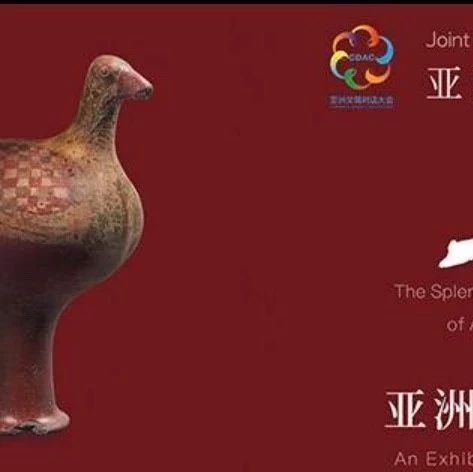Read History with Jack 29 - the Splendor of Asia
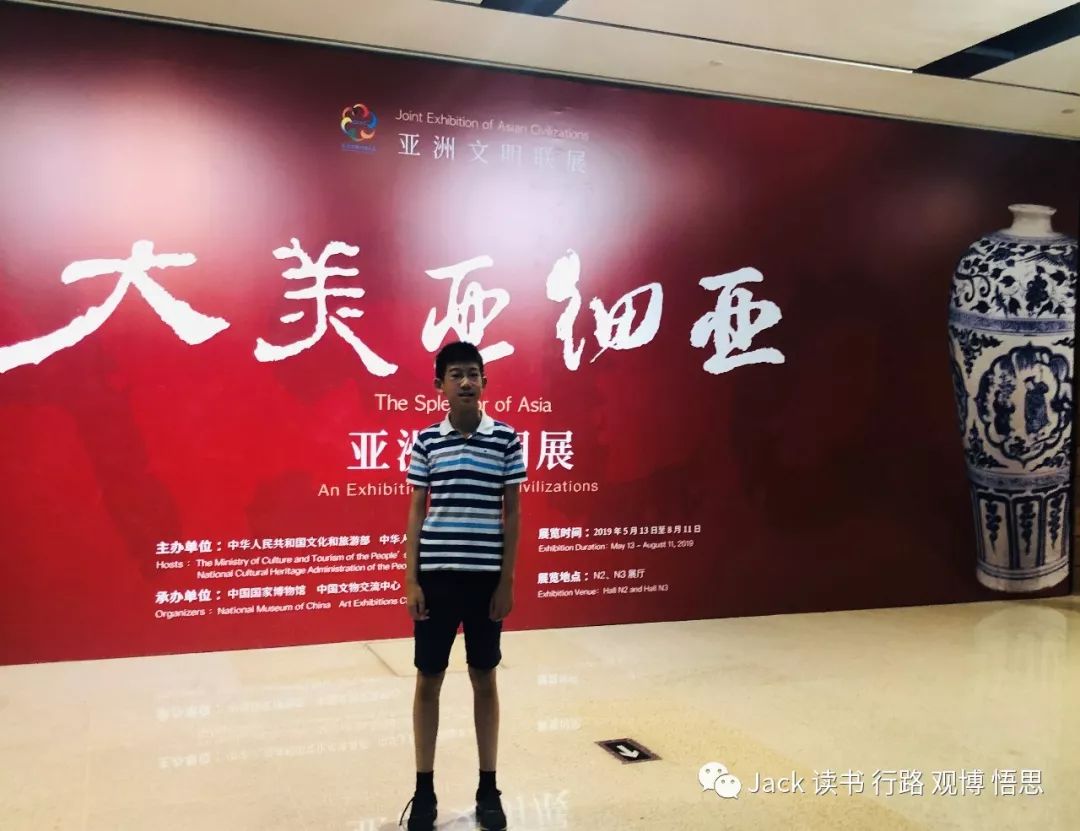
Recently, I visited an exhibition in the National Museum called “The Splendor of Asia”. In the course of the past millennia, many ancient civilizations had thrived on Asia. They contributed a lot to the progress and splendor of human civilizations. Today, Asia still maintains its distinct cultural diversity. Different ethnic groups, religions, and countries communicate with each other, helping to create a big Asian family.
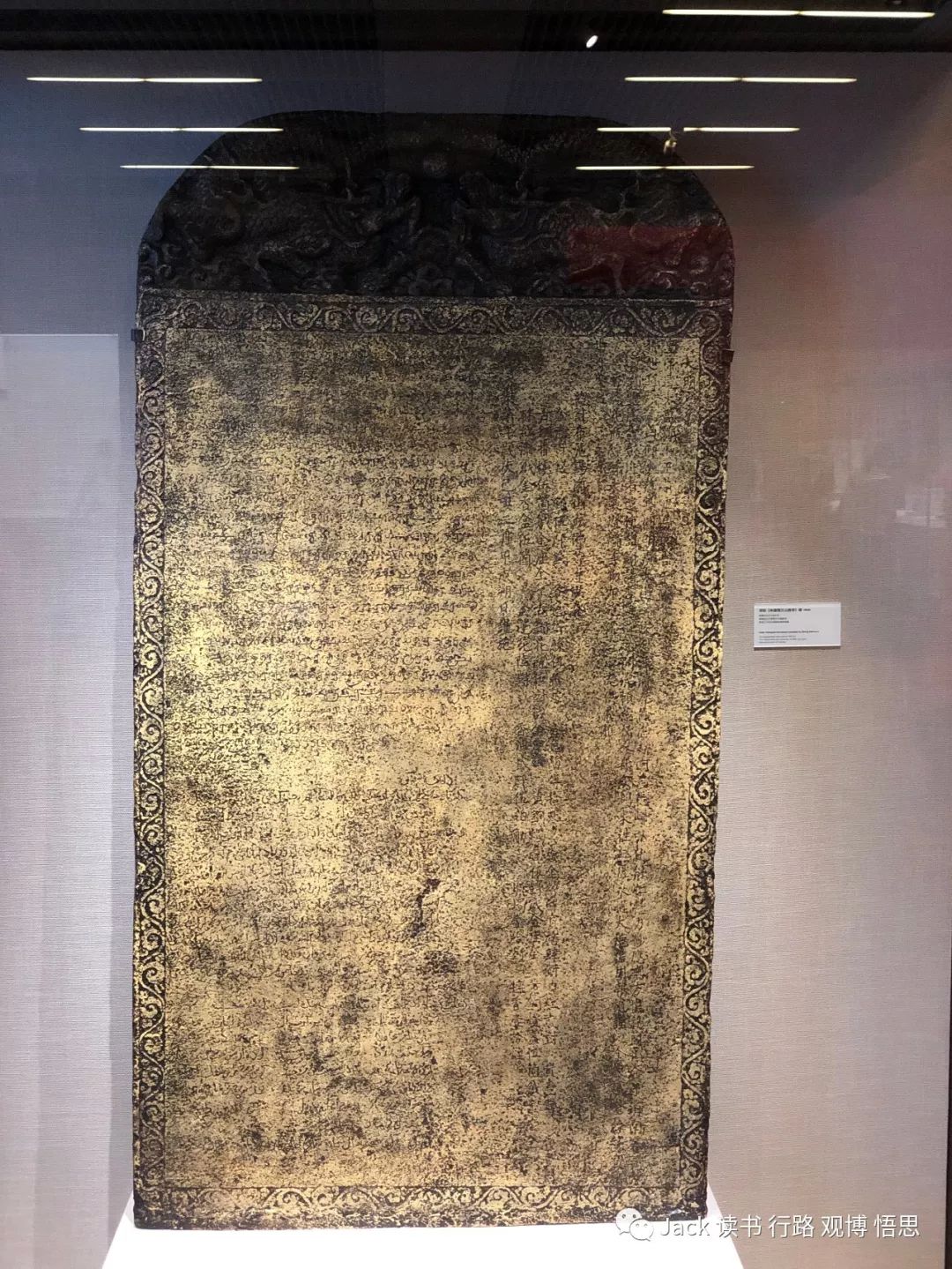
Throughout this exhibition, three items on display impress me a lot. The first one is the “Galle Trilingual Inscription installed by Zheng He.” In 1409, the Chinese Emperor sent the Chinese navigator Zheng He for the third time to sail into the ocean. This time Zheng He’s fleet consisted of 48 ships and about 20,000 men. They were heading for Sri Lanka to propagate the Chinese culture and to conduct cross-cultural communication. At Sri Lanka, Zheng He's men erected this stone tablet in a local temple. On this tablet, we can see that at the top there are two dragons, symbolizing the Emperor, and there are three kinds of inscriptions: Chinese, Tamil, and Persian. The Chinese inscription pays respect Buddha. However, the Persian and Tamil inscriptions are unclear to us due to some damage. But we can guess that these two kinds of writings are delivering the same message, except to different deities. The Tamil inscription appears to say pay respect to the Hindu god Vishnu, while the Persian inscription is about “Allah”, the Lord that all Muslims worship. This cultural relic can show the gathering, equality, and inclusivity of religions at that time.
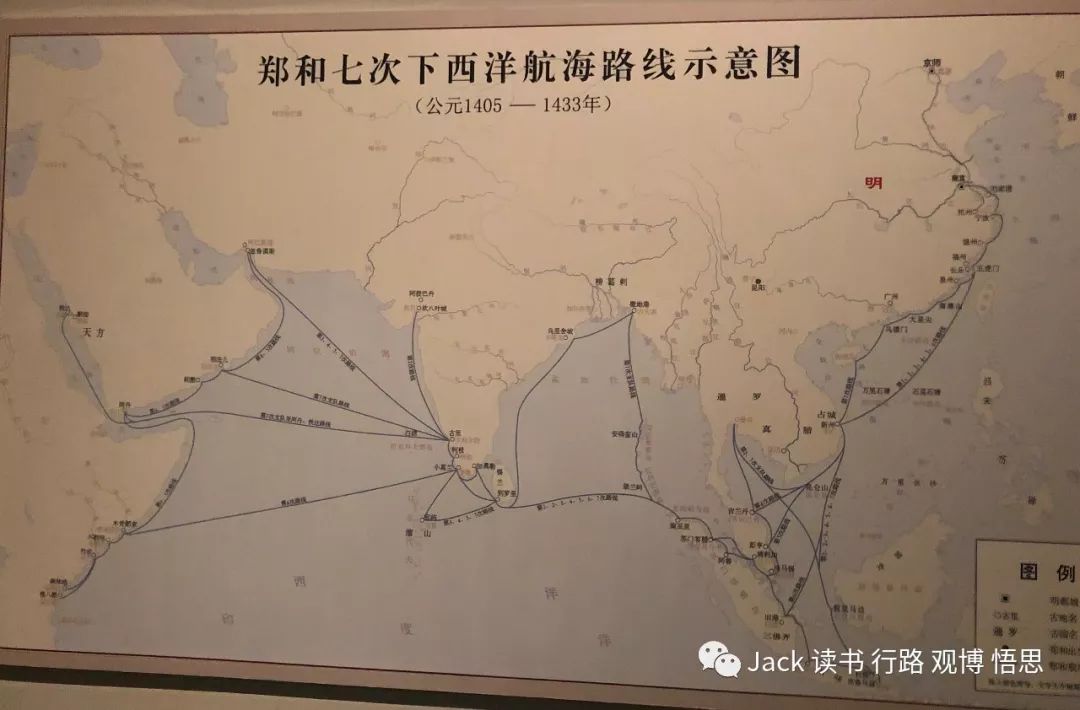
As we know, between 1405 and 1433, Zheng He led seven huge armadas from China to the far reaches of the Indian Ocean. The largest of these comprised almost 300 ships and carried close to 30,000 people. They reached Sri Lanka, India, the Persian Gulf, the Red Sea and East Africa. Zheng He’s expeditions passed on the Chinese culture to foreign regions and brought back things from other civilizations. However, after the 7th expedition, all of the explorings stopped. The Chinese shut their doors tight and all of the will to discover and explore were gone. Just as the Chinese were doing so, in Europe, the Europeans’ strong will to conquer and their avarice led them to fill in more and more of the blank spots on their maps. Even though their ships were like mosquitoes if compared to Zheng He’s drove of dragons, their ambition to conquer eventually allowed Europeans to build up their global empires.
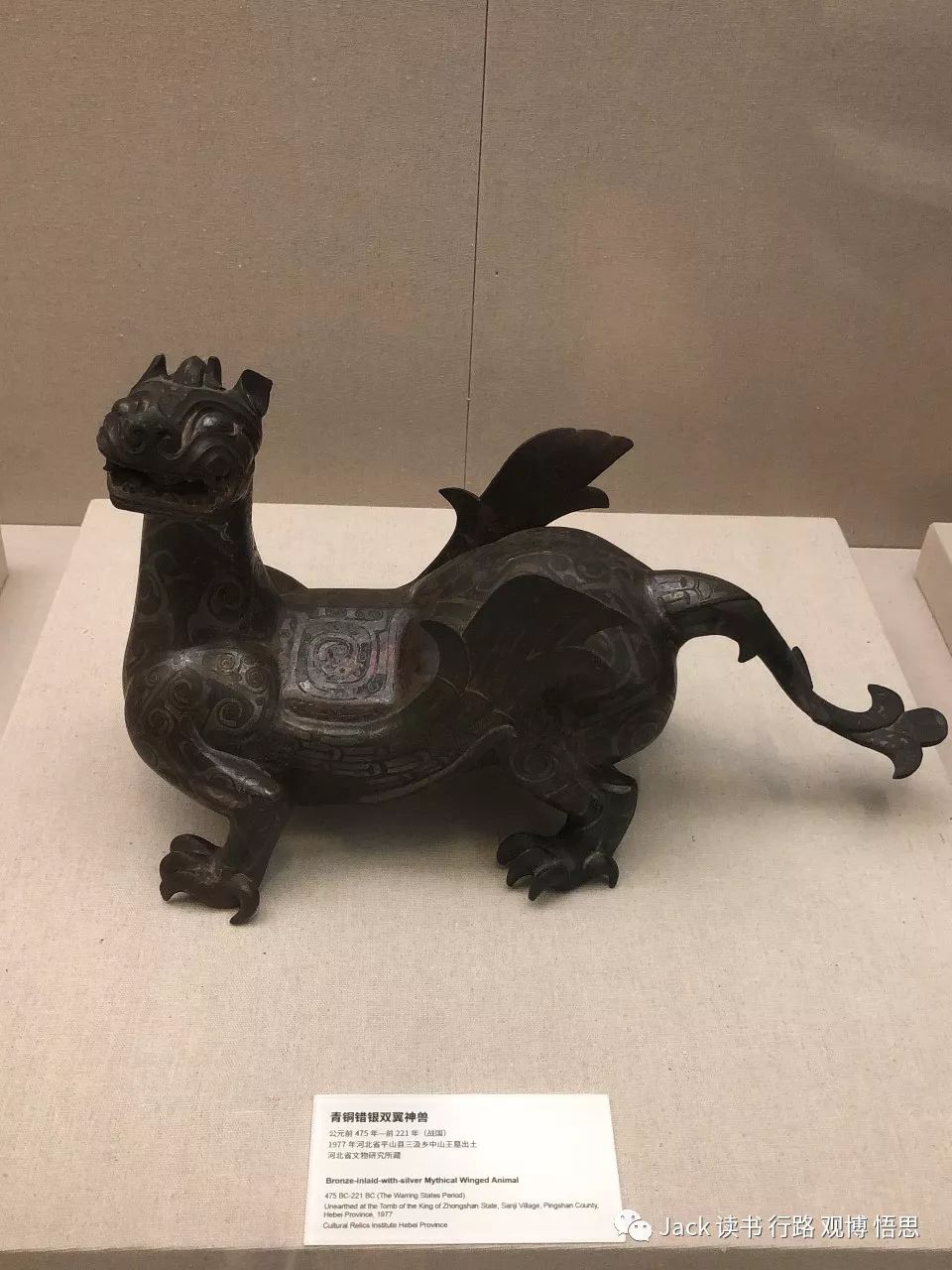
The second item that leaves a deep impression on me is a bronze-inlaid-with-silver mythical winged animal from the Warrior States Period in China. This creature has a mystical look. It appears strong like a tiger, but vigorous like a dragon. It proudly raises the head and stares at us, with its wings flung open like it is about to soar into the sky. I am shocked by the imagination and craftsmanship of the workers more than 2000 years ago who make this. Just look at it, it is so elaborate! The bronze gives me a feeling of simplicity but the gold and silver decorations are dazzling as well. These materials intertwine with each other and make this creature look both stern and nimble.
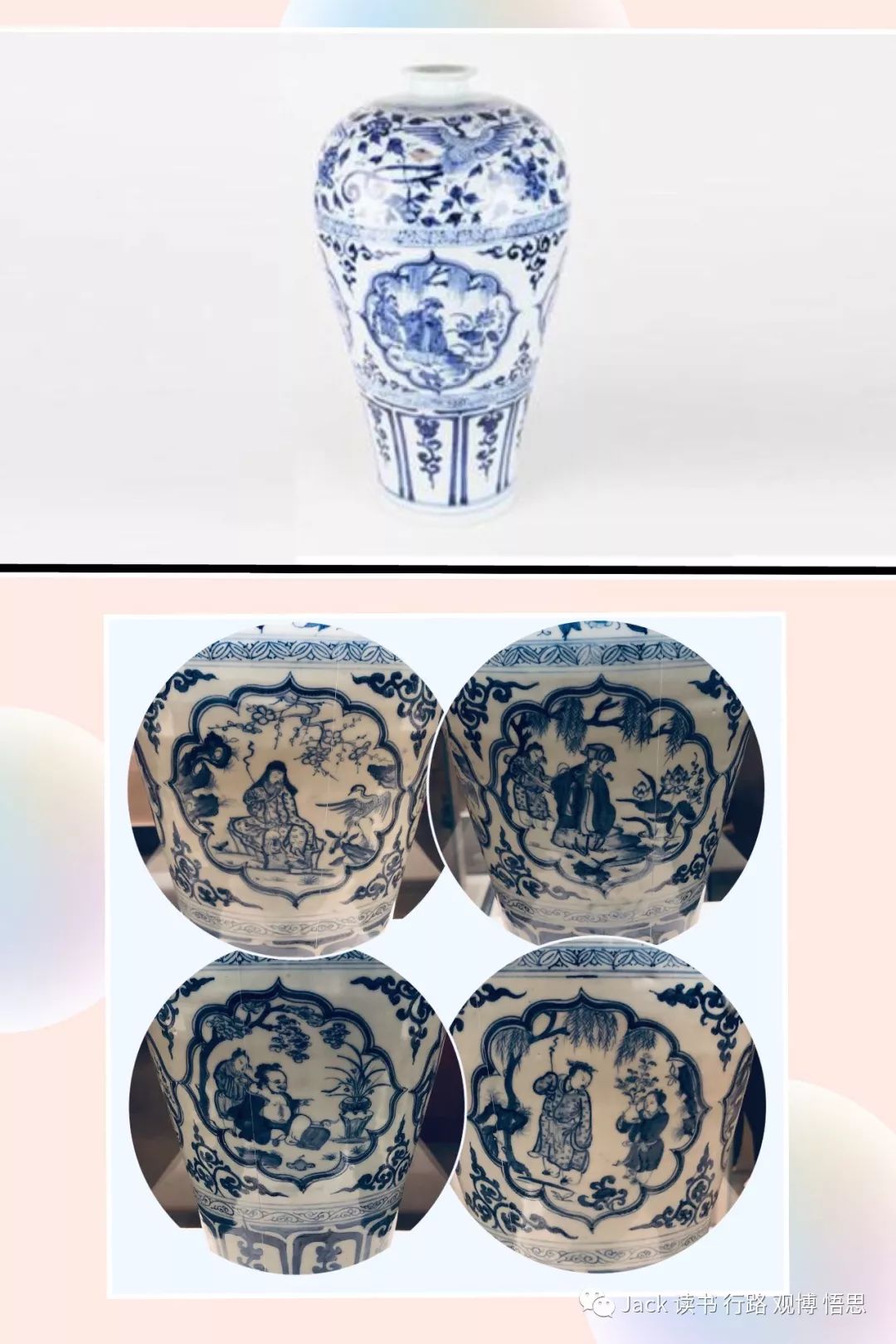
The last item is a Blue and White porcelain jar from the Yuan Dynasty. A Blue and White Porcelain from the Yuan Dynasty is extremely rare. I feel very lucky to witness one in this exhibition. Look at the shape of this jar, it can only contain maybe one or two flowers, but can you feel elegance that is hidden within? The patterns on this jar are better still. It depicts four scenes that are about how four ancient Chinese scholars enjoy four kinds of flowers. Zhou Dun Yi is a Song Dynasty scholar. He loved the lotus flower because he thought that lotus meant preserving one’s moral integrity. Another scene depicts an Eastern Jin Dynasty calligrapher called Wang Xi Zhi. He liked orchids because orchids symbolize living in seclusion as well as living in freedom. That is what he appreciated. Another Eastern Jin Dynasty poet called Tao Yuan Ming ardently loved chrysanthemum. This is due to the indifference to fame and wealth that chrysanthemum represents. Finally, the plum flower is appreciated by the Northern Song Dynasty poet Lin He Jing. The plum flower is a sign of elegance and Lin wants to achieve that state.
In conclusion, Asian civilizations had played a huge and important role in the history of this world. Among four of the most ancient civilizations, Asia occupies three of them: Mesopotamia, China, and the Indus Valley. Cherishing history and creating mutual exchanges has already become the accepted path of development and progress in Asia. Today, we hope that Asians can strive together for a better future of our race, and to contribute their own powers in this fast-changing world.
- 本文标签: 原创
- 本文链接: http://www.jack-utopia.cn//article/505
- 版权声明: 本文由Jack原创发布,转载请遵循《署名-非商业性使用-相同方式共享 4.0 国际 (CC BY-NC-SA 4.0)》许可协议授权
